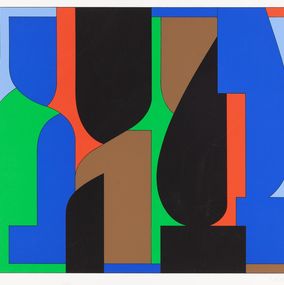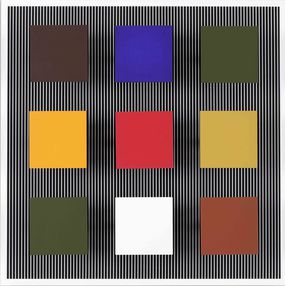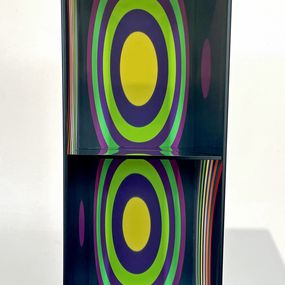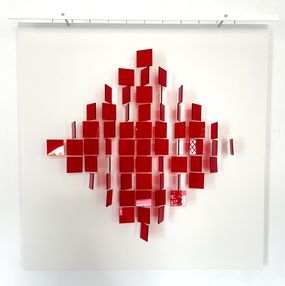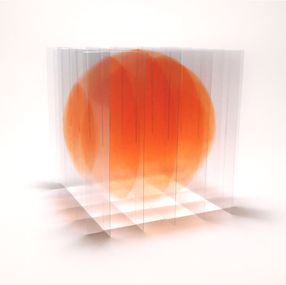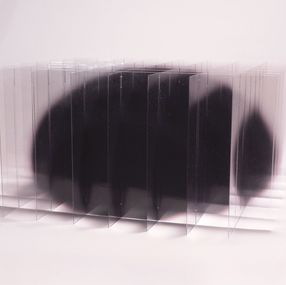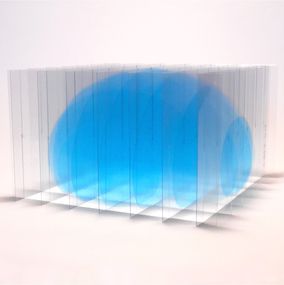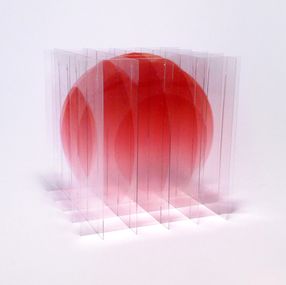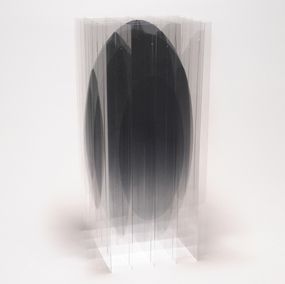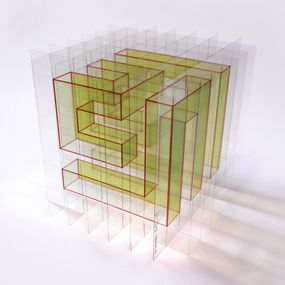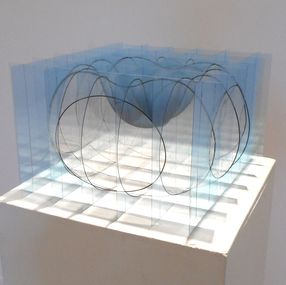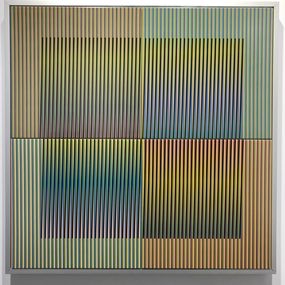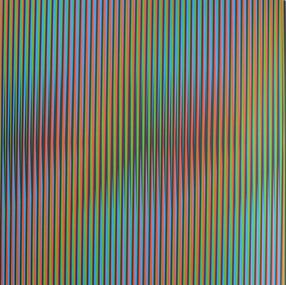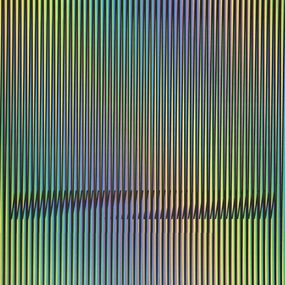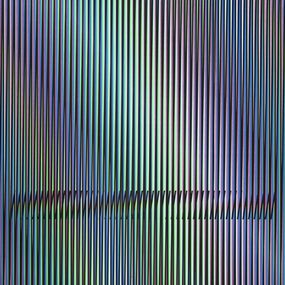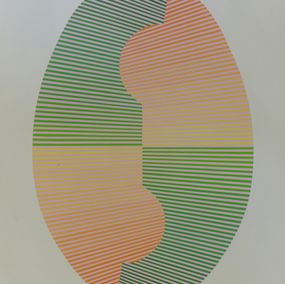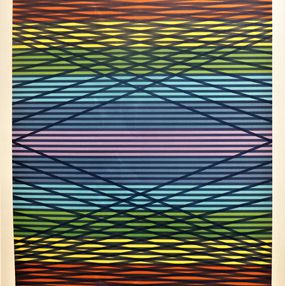
Movement Op' Art
The term “Op Art" was first coined in Time Magazine in 1964, to describe Julian Stanczak's exhibition Optical Paintings at the Martha Jackson Gallery. The article defined this new genre as a "new movement of optical art that has appeared in the Western world and which plays and abuses the fallibility of vision." “Op Art" describes all types of art based on optical illusions or visual tricks. Op artists distort viewers' vision by producing images that appear to move, are hidden, flash or vibrate. To do this, artists create visual effects through pattern and line to establish a juxtaposition between the foreground and background, resulting in a contradictory perceptual experience.
It wasn't long before Op Art was commercialised; designers, illustrators and advertisers adopted this unique style to create posters, furniture, record and book covers. Throughout the 1960s, shops were filled with Op-Art-inspired clothing, and interiors were adorned with Vasarely-style wallpaper. This merging of Op Art and popular culture arguably discredited the movement, reducing it to a passing fashion and design phase. However, today the movement is increasingly being appreciated for its contribution to fine art, and the Centre Pompidou even dedicated a major retrospective to Victor Vasarely in 2019. Galleries are filling their walls with hypnotising optical illusions, and are beginning to appreciate the complicated yet beautiful artworks of the Op Art movement.
Victor Vasarely
Vasarely is representative of the Space Age: a time where by the year 2000 many thought we would be wearing astronaut suits and loading up the space ship for the school run.
His use of geometric patterns, opposing colour and complicated perceptions test the limits of our vision, and established his position as an artist in the contemporary art world. In his famous series, Vega, Vasarely depicts the depths of space, the magnitude of planets and the momentousness of galaxies through an intricate composition of line and shape. His works are emblematic of possibility; influencing not only fellow artists but also popular culture as a whole.
Bridget Riley
Heavily influenced by George Seurat, Riley developed her distinctive style in the 1950s. Riley quickly established herself on the art scene and in 1964, her work, Currrent, featured in The Exponsive Eye exhibition organised by MoMA. Although her geometric black and white canvases were reminiscent of Vasarely's works, she was considered one of the leading figures in Op Art.
Maybe your parents or grandparents claim Op Art is no longer relevant, since they've certainly had their fill of psychedelic swirls and mind-altering patterns. However, here at Artsper, we're keen to reintroduce hallucinatory artworks into your life, so rediscover Vasarely and the best Op-Art-inspired contemporary artists we have to offer!










